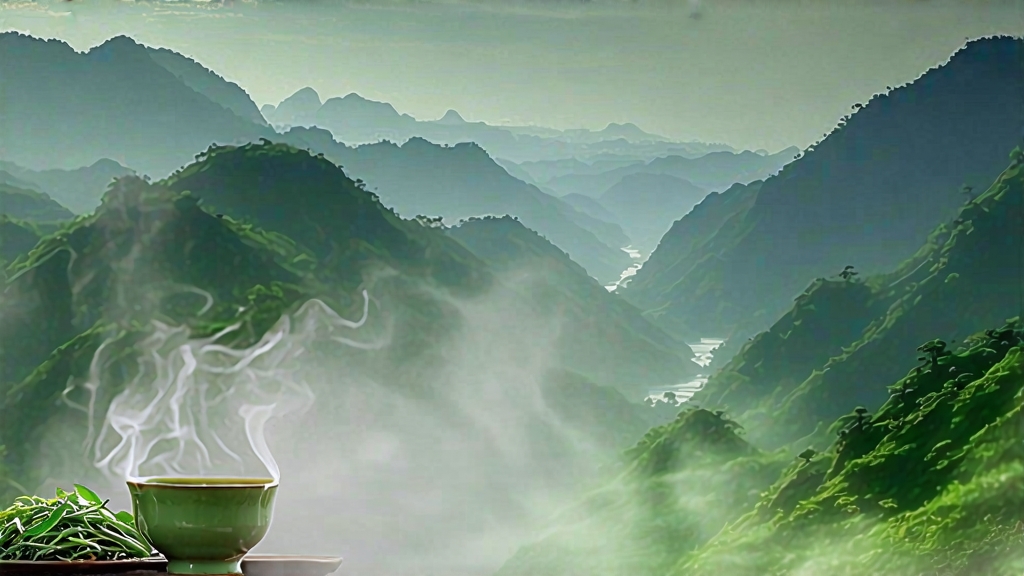
Few leaves in the world carry as much folklore, craftsmanship, and aromatic paradox as Tieguanyin, the “Iron Goddess of Mercy.” Hailing from the granite ridges of Anxi in southern Fujian, this oolong is at once floral like spring orchids, creamy like fresh custard, and mineral like rain on hot stone. To understand China’s vast tea universe, one must sit with a gaiwan of Tieguanyin and let its layered personality tell the story of geography, devotion, and time.
Legend places Tieguanyin’s birth during the Yongzheng era (1723–1735). A poor farmer named Wei Yin, so the tale goes, found a neglected iron statue of Guanyin, the Bodhisattva of Compassion, in a crumbling mountain shrine. After carrying the figure home and burning incense daily, the goddess appeared in a dream and pointed him to a hidden cave behind the temple. There he discovered a single tea shoot shimmering in moonlight. He planted it in his field, and the resulting tea was so fragrant that neighbors believed it carried the goddess’s mercy. The name Tie—iron—refers both to the statue and to the tea’s heavy, tightly rolled leaves; Guanyin honors the divine gift.
Modern historians temper the myth with records showing that Anxi farmers had been experimenting with partial oxidation since the Song dynasty, but the legend persists because it captures the tea’s spiritual aura. In Anxi, tea is still spoken of in the language of reverence: leaves are “offerings,” and the first infusion is always poured to the earth.
Tieguanyin is not a single tea but a spectrum of styles shaped by cultivar, season, elevation, and the maker’s intent. The original heirloom is Hongxin Wei, “red-heart crooked tail,” prized for its low yield and haunting aroma. In the 1990s, horticulturists released Lüxin Tieguanyin, a greener, higher-yielding clone that thrives at lower elevations. Market demand later split the category into three main commercial styles:
- Traditional Roast (nong xiang): leaves are oxidized 30–40 %, then charcoal-roasted in bamboo baskets for 12–20 hours. The cup is amber, round, and nutty with notes of toasted sesame and dried longan.
- Modern Green (qing xiang): oxidation is arrested at 15–25 %, skipping roast for a quick bake at 70 °C. Liquor glows jade-green; aroma bursts with white lily and fresh mango.
- Aged Tieguanyin (lao tie): carefully stored unroasted leaf re-roasted every two to three years, developing patina-like depth of prune, sandalwood, and medicinal camphor.
Each style begins the same way: hand-picking at dawn when dew still pearls the leaf. Pickers select the “open face” standard—one bud flanked by two semi-mature leaves—then ferry the harvest in bamboo baskets lined with banana leaves to prevent bruising. Timing is ruthless; leaves picked at 7 a.m. must begin withering by 9 a.m. or the cellular clock moves past redemption.
Withering happens in two acts: outdoor “sunshine bath” and indoor “cooling rest.” Under morning sun, leaves are shaken every fifteen minutes to edge the edges, initiating oxidation. After thirty minutes, they are moved onto bamboo trays in a climate-controlled room where fans circulate air at 22 °C and 65 % humidity. Here the leaf relaxes, losing grassy bite and gaining floral precursors. Master tea makers listen for a faint rustle called “qing qi”—the sound of stiffening cell walls—before proceeding to tumbling.
Tumbling, or yao qing, is Tieguanyin’s signature choreography. Leaves are wrapped in a square of canvas, then rhythmically tossed in the air and caught, allowing edges to bruise against each other. This repeated micro-trauma ruptures cells just enough for enzymes to meet oxygen, creating the honeyed lactones that later translate into orchid aroma. A single batch may endure 4–6 tumble-rest cycles across four hours, each cycle shorter than the last to prevent over-oxidation.
When the leaf’s rim turns reddish-brown and the center remains jade, oxidation is halted with a quick sha qing—kill-green—pass through a 280 °C drum roaster for ninety seconds. The heat denatures enzymes, locking in the desired 20–35 % oxidation level. Immediately afterward, leaves are rolled while still warm. A mechanical cloth-wrapped ball roller compresses the leaf into